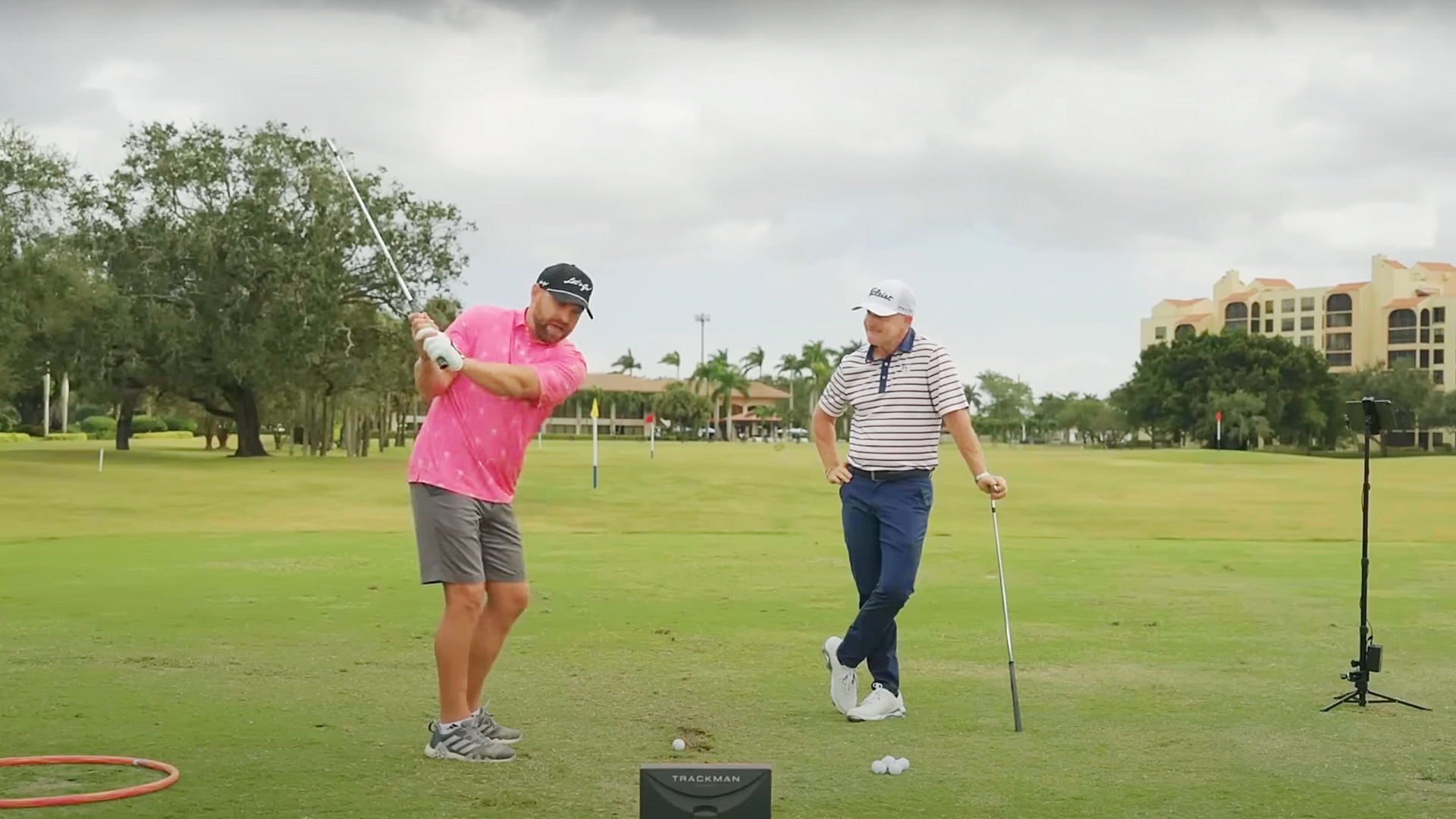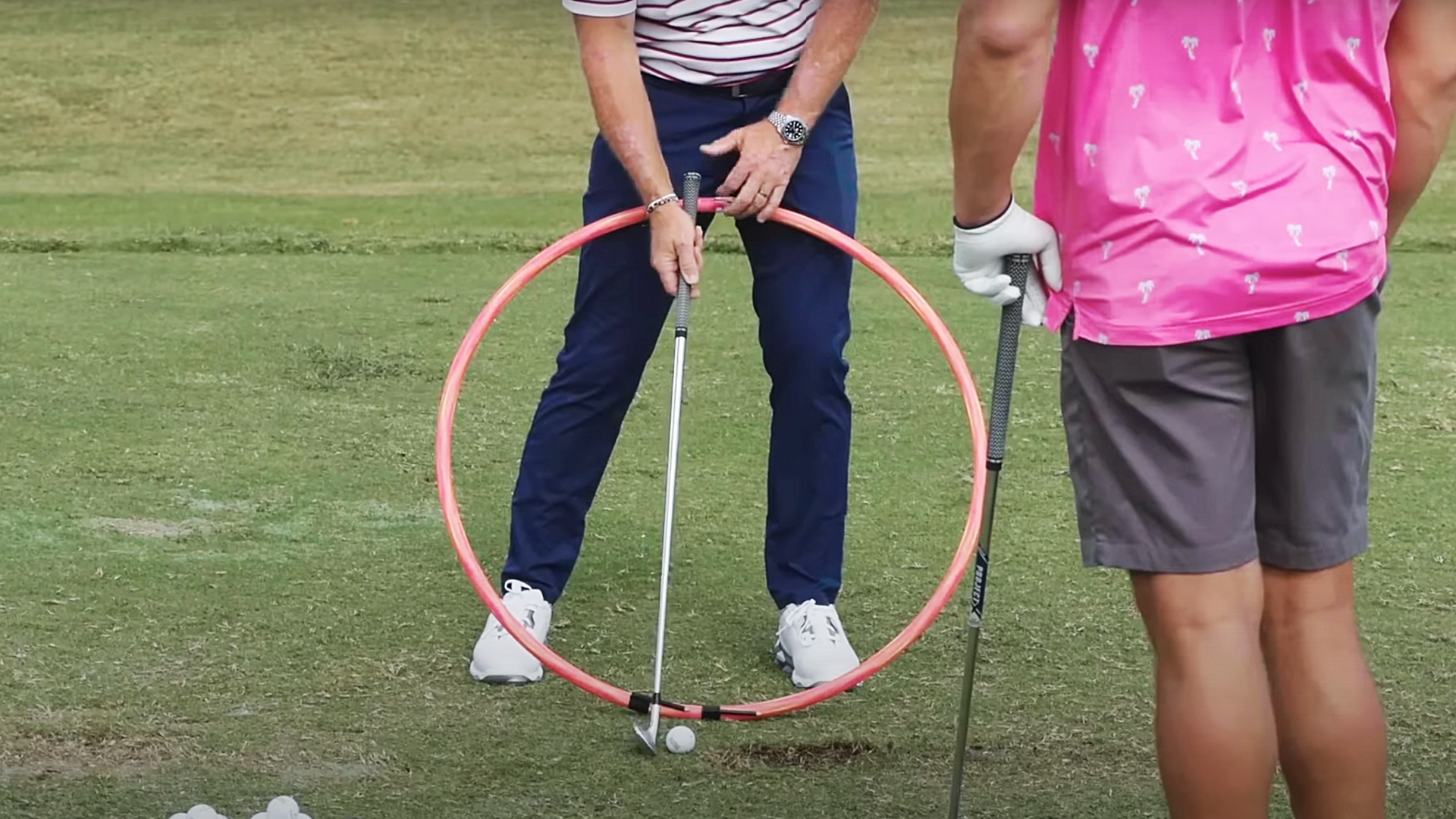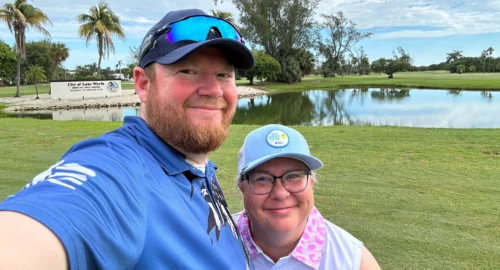
In this live coaching session, Golf Digest Top 5 Instructor Cameron McCormick works with a self-taught golfer struggling with inconsistent contact—think fat and thin shots with directional misses.
The lesson focuses on identifying and addressing the root cause of these issues using a simple, body-focused adjustment. Rather than overloading Steve, our student, with technical swing mechanics, coach McCormick introduces a “ball backwards” approach—starting with contact and working in reverse to determine what needs to change.
Give the live lesson a watch to see his expert advice in action:
Understanding a Beginner Golfer’s Pain Points
Like many recreational golfers, Steve’s issues include chunking, topping, and errant shots—what McCormick calls “pain points.” These contact issues stem from a lack of tailored feedback (from being mostly self-taught) and a misunderstanding of what’s causing the problems.
Let’s be clear—there’s nothing wrong with this! It’s a great lesson for many other golfers who might take golf casually but have hit a point they really want to improve. Today there are tons of free resources (like YouTube) and easy-to-use golf swing trainers that naturally correct many of these pain points.
The Core of the Golf Ball Contact Fix: Belt Buckle Rotation

Instead of focusing on swing positions, McCormick uses a hula hoop as a visual aid to explain how a club should land—much like a plane—precisely at or just after the ball. Amateur golfers often suffer with one main issue: the club lands too early and too deep. The fix?
A single, targeted tweak: increasing body rotation, especially with the belt buckle and belly button. By rotating more on both the backswing and the follow-through, the student unlocks better contact and more club speed without focusing on hands or arms.
If you’re struggling with similar contact issues, McCormick’s Ball Backwards Blueprint is now available online. It teaches the same core concepts used in this live lesson—and it’s built specifically for self-taught golfers who want to improve ball striking without overhauling their swing. Click here to learn more and access the Ball Backwards Blueprint.
Immediate Improvements from One Simple Change
After making this change, the student’s clubhead speed increases from 89 to 96 mph, and ball speed jumps from 113 to 131 mph. More importantly, his shots fly straighter, higher, and longer—matching his goal carry distance of 170+ yards. McCormick emphasizes that better rotation not only fixes fat and thin shots but also enhances swing speed naturally.
Why This Works—and Why It’s Sustainable
Rather than relying on overcomplicated data or swing breakdowns, the lesson focuses on feel and function. McCormick explains that many swing flaws are just secondary effects of one primary error. In this case, fixing the lack of body rotation addressed everything—from fat shots to loss of distance—without needing to alter the golfer’s overall technique.
This live lesson demonstrates that improving ball contact doesn’t require a swing overhaul. With expert coaching and a clear focus on functional movement—like rotating the body more efficiently—even self-taught golfers can make fast, dramatic improvements. McCormick’s ball-backwards method empowers players to self-diagnose and self-correct, using feel-based cues to play better golf with less guesswork.
Want to start making solid, consistent contact just like the golfer in this video? Explore the full Ball Backwards Blueprint with Cameron McCormick at Performance Golf.

